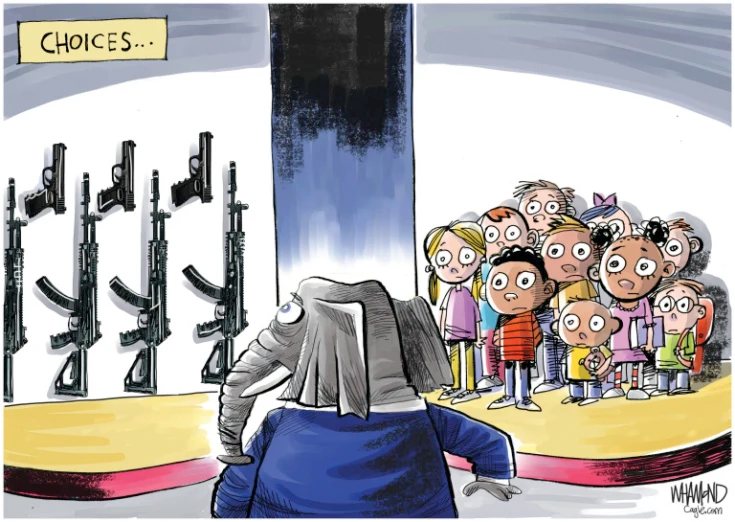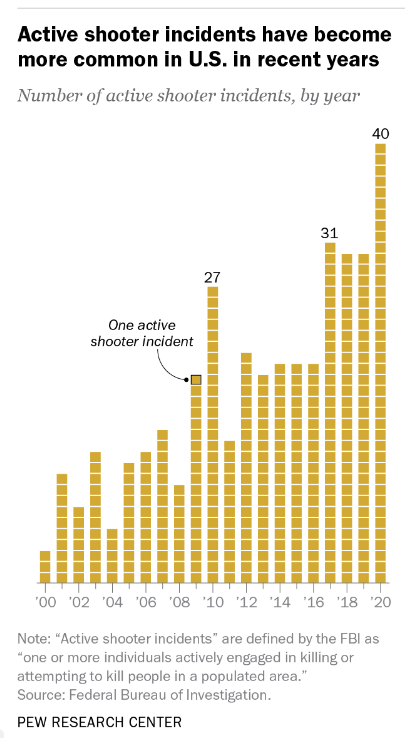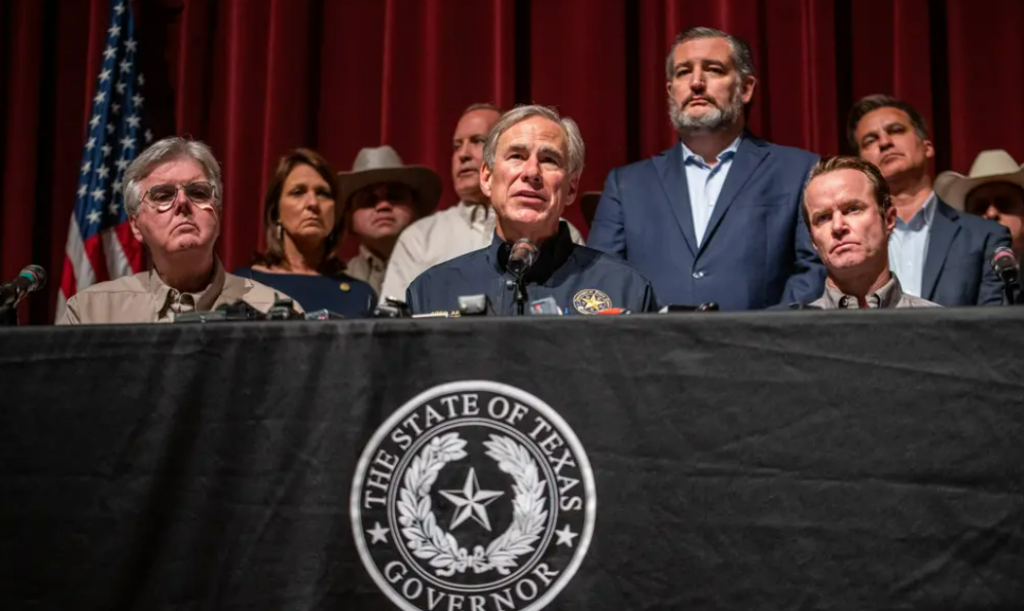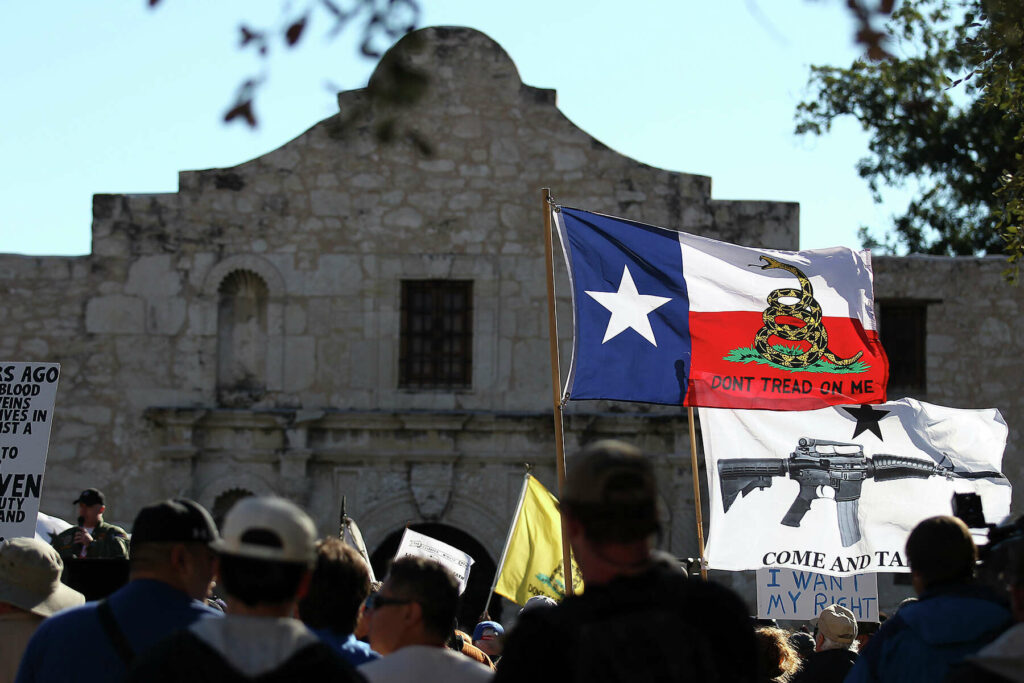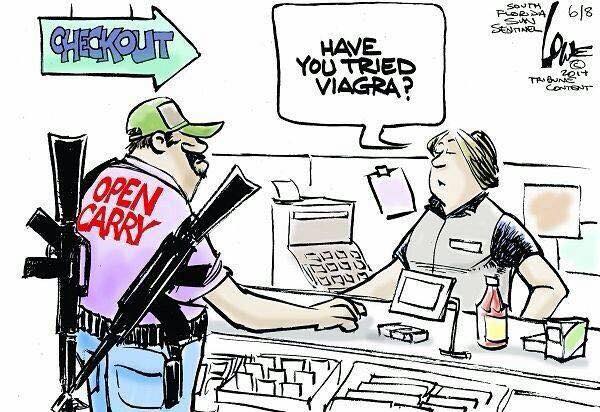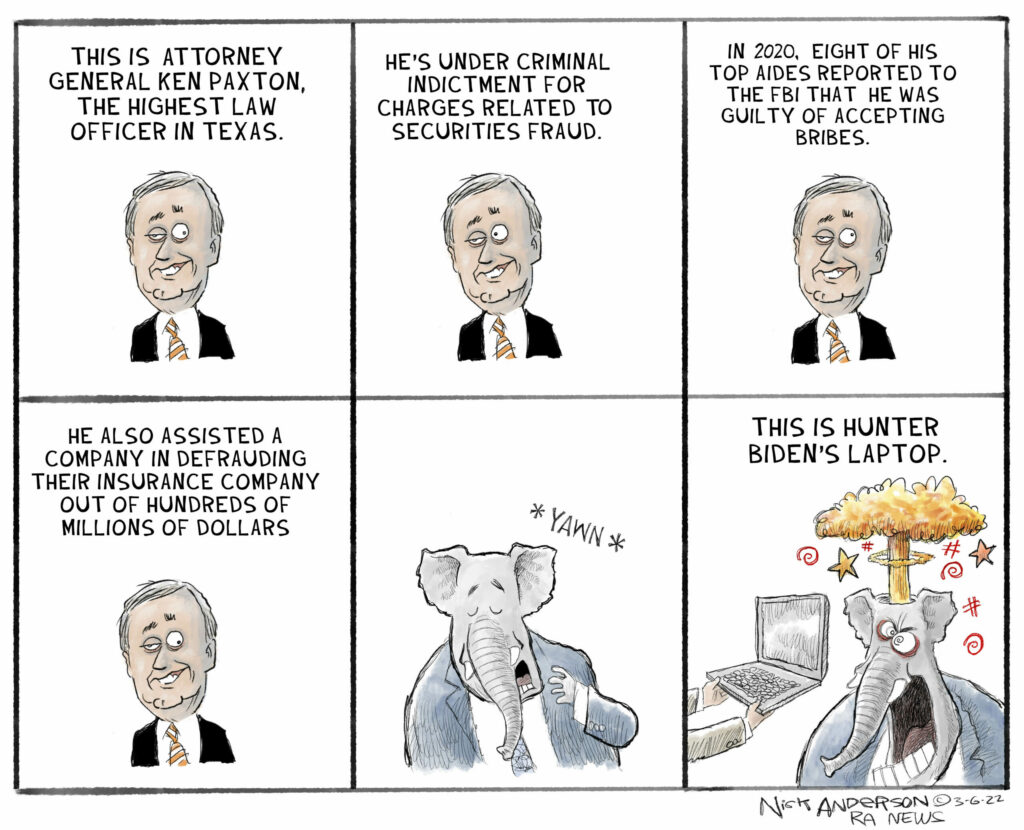There were some headlines last week about two 18-year-old boys commiting mass shootings — in Buffalo and Uvalde — within a few days of each other. That reminded me of a post I wrote just over a year ago — Two 21-Year-Old Men Killed People Recently — about mass shootings in Atlanta and Boulder.
(A follow up to the old post — the young man who killed ten people in a Colorado supermarket in 2021, Ahmad Al Aliwi Alissa, has been found incompetent to stand trial by two different panels of psychiatric experts. A diagnosis was not given, but courts don’t usually keep a trial from going forward unless the defendant is seriously psychotic, as in pretty much untethered to reality and unable to comprehend what he did. The prosecutors fought the incompetence finding tooth and nail. One of the people Alissa killed was a police officer. The most recent news stories say he’s going to be confined to a psychiatric hospital indefinitely. As I understand it, they might still try to prosecute him some day once his psychosis is under control.)
School shooters are nearly always teenage males. The average age of a school shooter is 18, I read this week. I read here than the median age of school shooters is 16. This page doesn’t have data more recent than 2020, but it says 95.7 percent of all mass shooters are male, and their average age is 33.2. Various studies have found that a quarter or more of mass shooters are under the age of 25. There have been a few in their 60s, also.
Also, just about three fourths of mass shooters used semiautomatic handguns and not AR-15s. That was true of last year’s shootings in Atlanta and Boulder. There has been some talk this week about an AR-15 ban, which I don’t expect to happen (although I wouldn’t stand in its way, if it did), but that still leaves a lot of mass shootings.
A stunningly large number of mass shooters are between the ages of 18 and 21. Uvalde shooter, 18; Buffalo shooter 18; Newtown shooter, 20; Marjory Stoneman Douglas High School shooter, 19. In addition to those in this three year age range many others are just above it. The shooter in the 2019 El Paso mass shooting was 23; the shooter in the AME Church mass shooting in Charleston, South Carolina was 21. This isn’t random chance. There’s a lot we know about the teenage and young adult male brain that makes those who are 18, 19 and 20 much higher risk for this stew of interlocking behaviors than men ten or twenty or for that matter even five years older. (Check out the actuarial tables that put a premium for auto insurance for men under the age of 25.) The shooters in Buffalo and Uvalde both appear to have waited until their 18th birthdays to purchase assault rifles to use in their massacres.
Of course young sociopaths can find other ways to get AR-15s. But getting them illegally is another way to get caught. You might say, “Well, they could still just buy a hand gun.” But in fact they can’t. Perversely, federal law requires purchasers of handguns to be 21. But you can buy rifles and shotguns (which includes all assault rifles) when you’re 18.
This is in the context of arguing that raising the age to legally purchase any sort of “long gun” to 21 would do some good. It probably would. Raising the age to 25 would do even more good. I hear a lot of arguing that if 18-year-olds can join the military they ought to be able to handle guns, but in the bleeping military they are supervised. And on most military posts there are a lot more rules about personal firearms — registration, where they must be stored, where they can be carried — than is true in most right-leaning states. Troops living in barracks can’t keep their personal firearms with them but must store them in a base firearm storage facility, for example. Because the officers aren’t stupid.
There’s a fascinating interview in Politico with two criminologists who have studied mass shooters in depth. The young men are angry and alienated and see no future for themselves, but they aren’t “mentally ill.” They are troubled; they are badly socialized. But as a rule most aren’t crazy and would not qualify as “mentally ill” as medical science defines the term. One of the criminologists said,
“Early childhood trauma seems to be the foundation, whether violence in the home, sexual assault, parental suicides, extreme bullying. Then you see the build toward hopelessness, despair, isolation, self-loathing, oftentimes rejection from peers. That turns into a really identifiable crisis point where they’re acting differently. Sometimes they have previous suicide attempts.”
For most of them, the mass shooting is intended as a final act of defiance against the world they think has wronged them. They don’t expect to survive.
I don’t think most people realize that these are suicides, in addition to homicides. Mass shooters design these to be their final acts. When you realize this, it completely flips the idea that someone with a gun on the scene is going to deter this. If anything, that’s an incentive for these individuals. They are going in to be killed.
So arming teachers isn’t likely to work. What also doesn’t work is labeling the perpetrators as “monstors” or “evil.”
If we explain this problem as pure evil or other labels like terrorist attack or hate crime, we feel better because it makes it seem like we’ve found the motive and solved the puzzle. But we haven’t solved anything. We’ve just explained the problem away. What this really problematic terminology does is prevent us from recognizing that mass shooters are us. This is hard for people to relate to because these individuals have done horrific, monstrous things. But three days earlier, that school shooter was somebody’s son, grandson, neighbor, colleague or classmate. We have to recognize them as the troubled human being earlier if we want to intervene before they become the monster.
The Buffalo shooter told one of his teacher he was going to commit a murder-suicide after he graduated high school, and she didn’t report this because she didn’t think he was serious. He wasn’t “evil” or a “monster” to her. And if we’re going to round up all the 18- to 21-year old males who are angry and alienated and say threatening things, we’re going to need a lot more prisons. Maybe we should barb-wire Idaho and throw them all in there until they straighten out.
On the other hand, it would be great if schools had more resources to identify and help young males who show signs of fitting the profile. This is not just to prevent mass shooting, because most of them aren’t going to go that route. More of them may “graduate” to domestic violence or drugs or binge drinking and driving or other destructive behavior.
More from the interview:
Post-Columbine there’s been this real focus on hardening schools — metal detectors, armed officers, teaching our kids to run and hide. The shift I’m starting to see, at least here in Minnesota, is that people are realizing hardening doesn’t work. Over 90 percent of the time, school shooters target their own school. These are insiders, not outsiders. We just had a bill in Minnesota that recognized public safety as training people in suicide prevention and funding counselors. I hope we keep moving in that direction.
The past several posts have been about why more and more guns just make us less and less safe. Gun control laws do reduce gun homicides and other firearm deaths. Anything that can be done to make acquiring a firearm a bit more complicated — required background checks, waiting periods, raising age limits, licensing, etc. — would discourage some of the younger mass shooters. I’ve written in the past about why I’d like to see most if not all semiautomatic firearms be off limits to most civilians, although I’m not going to hold my breath waiting for that to happen.
Regarding mental health services, what would be really useful is helping schools and other institutions recognize and provide counseling services to those who are moving into self-destruct mode. Building more psychiatric hospitals might be a good idea for our mental health system overall, but most of our mass shooters don’t have the kinds of “mental illness” that are treated in hospitals, Ahmad Al Aliwi Alissa being an exception. And the last thing we need to do is to further stigmatize mental illness either by blaming it or creating a database of “mentally ill” people who aren’t allowed to purchase guns, which has been suggested in the past. Few mass shooters have been diagnosed with anything at the time of the shootings. Most of them don’t have a true “mental illness” so much as just being seriously maladjusted.
Since this is getting a bit long already, I’m going to do my “seriously maladjusted rant in another post.

